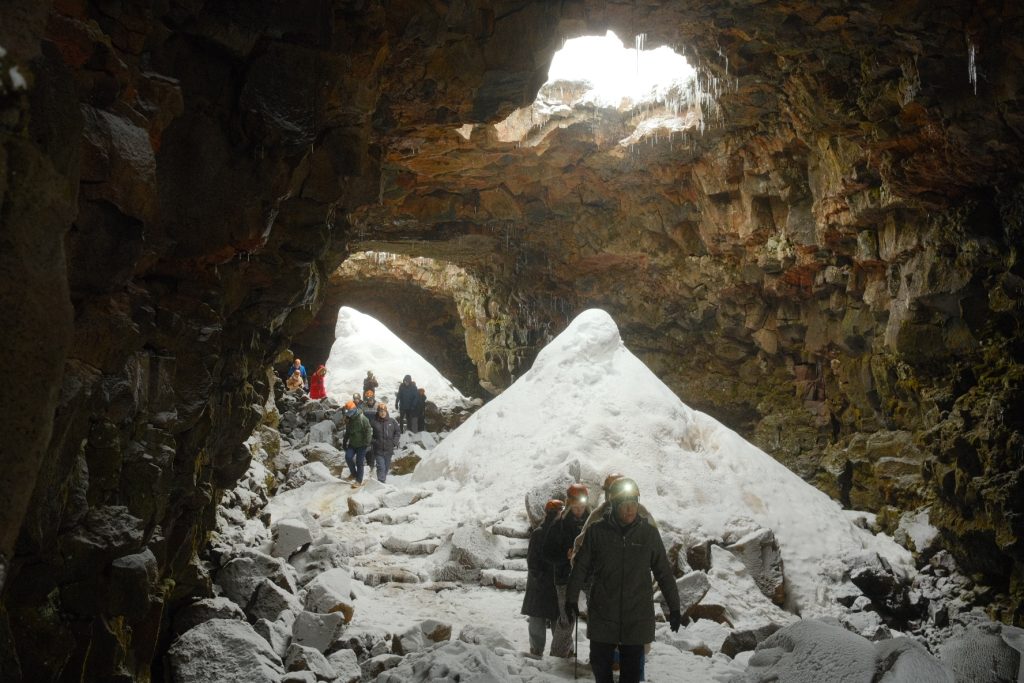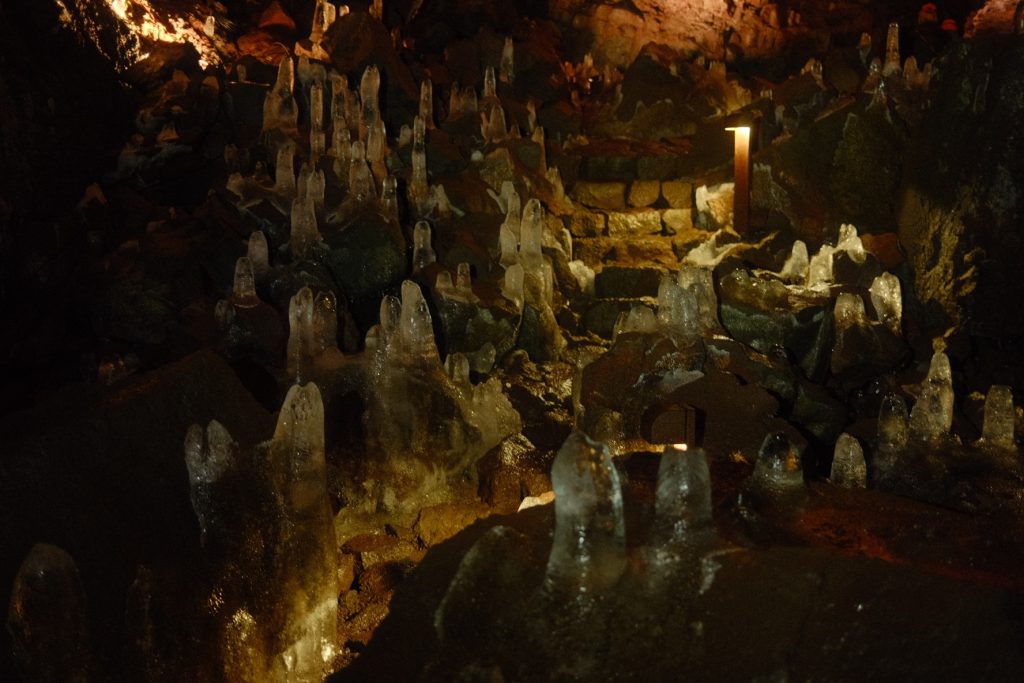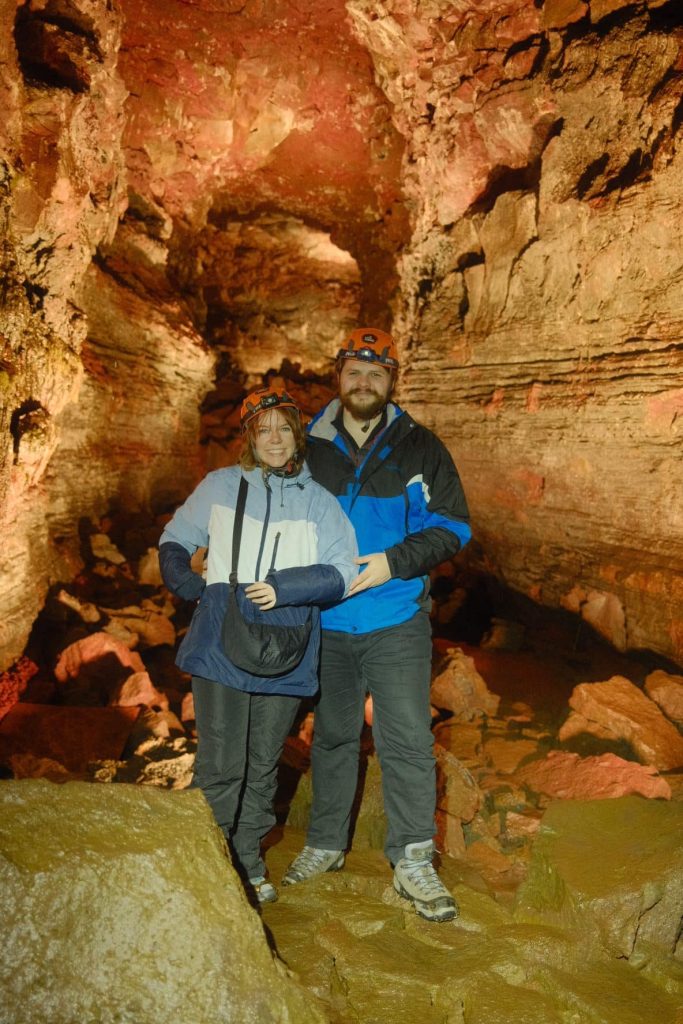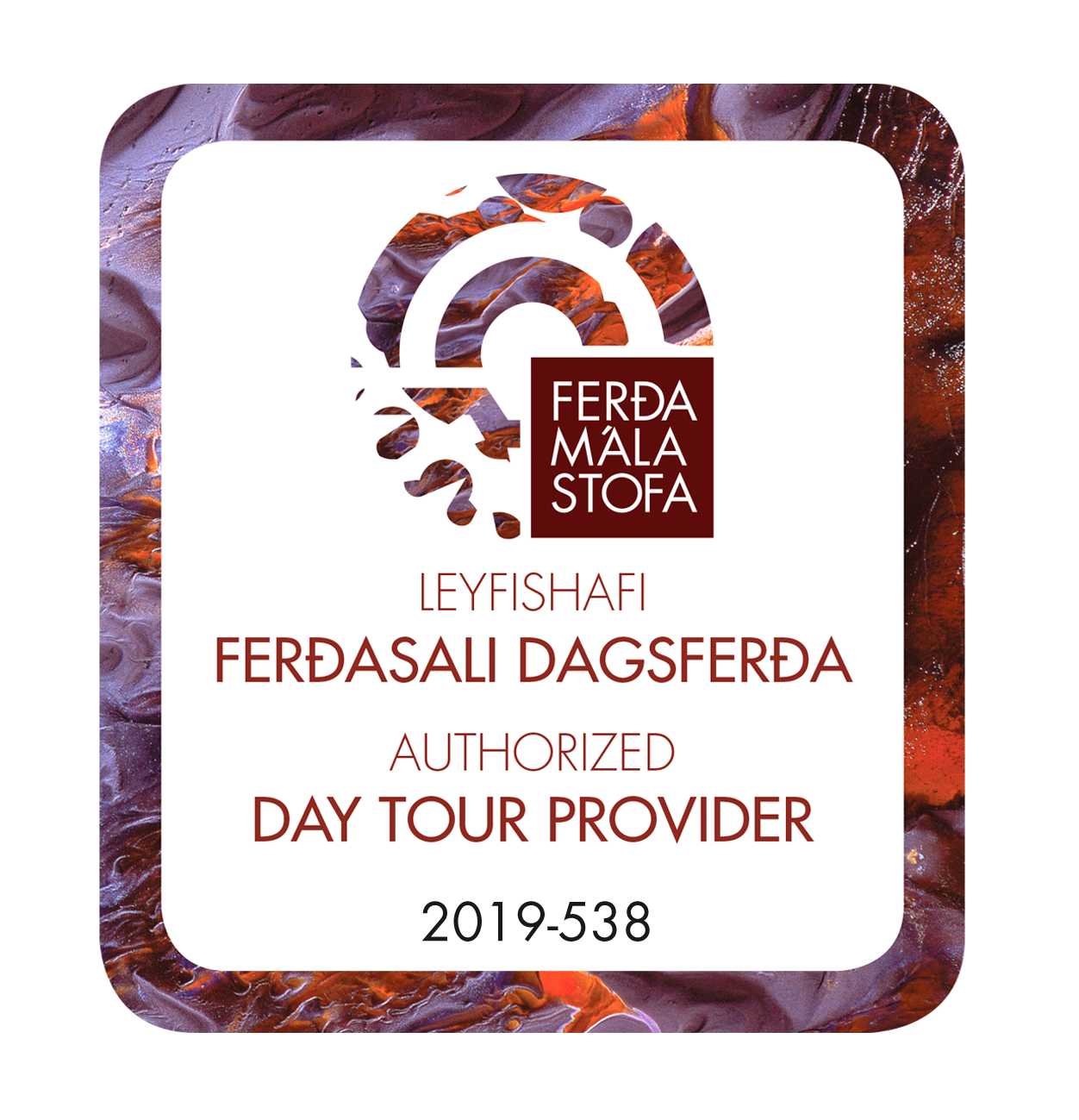Guest blog by Dan Davison
The Lava Tunnel is one of Iceland’s most amazing geological wonders.
Located 30 minutes from Reykjavík lies Raufarhólshellir, a volcanic cave that formed during an eruption some 5,000 years ago. Today, visitors travel from all over the world to step inside the lava tunnel and explore the frozen remains of the lava flow.
This wasn’t just an interesting tour in Iceland, however. It was part of my personal challenge: 100 bucket list adventures in just 4 years. One of those challenges? Experience true darkness.
Stepping Into Iceland’s Underground World
It was the day after I’d proposed to my fiancée. We’d climbed a glacier the day before, and while trekking our way back east across Iceland, we planned to stop off at The Lava Tunnel. The snowstorm outside only added to the drama!
At the reception, we don our little helmets, stick some crampons on, and get a little safety lesson from our tour guide. Then, we step out of the back door of the reception into a blizzard, stumbling across the ground to meet the entrance to a cave, and inside, something that I still don’t quite believe was real.
Giant, Tim-Burtonesque piles of snow and ice beneath collapsed sections of the roof. It was beautiful, the snow swirled gently through the roof, collecting neatly on the top of the pile. Above us, icicles hung perilously from the rims of the maws. I took a moment to appreciate having a helmet on!

We walked through the first part of the cave, stopping in a wider area as our guide gave us information about the tunnel itself, and about how the ceilings cave in. He explains all about the tunnel’s history and Iceland’s unique geology.
A Crash Course in Lava Tubes
The Lava Tunnel itself is really cool. It’s like the fossil of a volcanic eruption. When a volcano erupts, molten rock spills out of the crater. Lava rolls down the slopes of the mountain, and cools and solidifies, but sometimes, something special happens. As the surface of the lava grows hard, sometimes, the lava flowing underneath keeps on flowing. It’s like a frozen river, there’s ice on the top, but water flowing below.
Tubes form, and over time, the rock hardens, shifts, and the lava level flows down, creating these interesting etched lines across the wall. It’s like when you drink coffee, and it leaves ring stains around the inside of the cup, remnants of lava levels. The lava eventually drains out, leaving these little clues behind. Lava straws (stalactites but made out of hardened lava) hang from the ceiling, many of which were stolen by tourists years prior.
High above, on the ceiling, splodges of ore veins glitter down at us – copper, iron, and sulphur. Our tour guide quips that many people think that the yellow sulphur is gold. He laughs and explains that, if it were, he would be living somewhere else by now, maybe somewhere warm.
Our guide explained that Iceland is full of these sort of things, thousands undiscovered, because, without a cave-in, they just exist hidden underground. The Lava Tunnel is one of the few that’s safe and accessible to explore thanks to the guided tours.
It turns out that if you discover one of these lava tunnels, you actually get to name it. The problem is, if you do discover one, it’s likely because you’ve fallen into it and broken both of your legs. So there’s a chance that the name you grant the tunnel could be something like “Help!” or “I’ve fallen down a lava tunnel and I can’t get out!“
As we progressed deeper into the tunnel, ice stalagmites rose out of the ground, creating bulbous formations, clipped by drips and drops of water from the ceiling above us. Looking straight up granted you amazing views of metal ores snaking across the ceiling, but also gave you a 50% chance of getting water directly into your eye.

Experiencing True Darkness
Finally, standing in the vast empty cave, our guide picks up a heavy mechanical remote, and asks the room “shall we turn out the lights for one minute?“. He tells us to turn off all devices, nothing can emit light, we’re going to experience true darkness.
In a flash, everything is black.
My fiancée is holding onto me, and there are drip, drip, dripping sounds all around us. Someone breathes, about 3 feet in front of me, my senses are heightened, and I try to look around. There is nothing.
It’s darker than any dark I’ve experienced. I wave my hand around in front of my face. Nothing. I try to count my fingers, before realising that this is a bad experiment, because I inherently know how many fingers I have held up at one time.
We’d been in the dark for just one minute, but it felt like much longer. The absence of light changes your perception of space, sound, and even time itself.
Why The Lava Tunnel Should Be On Your List
I’ve explored caves before, but never like this. Standing right inside the frozen remains of a volcanic eruption, surrounded by formations sculpted over thousands of years is the sort of thing you can only experience here. The Lava Tunnel is one of the best ways of looking into Iceland’s raw geological history.
If you’re visiting Iceland, make sure to explore it. The standard tour is suitable for almost everybody, and there’s a longer, more intense tour that lets you venture deeper into the cave system. This was a bucket list dream realised: exploring a cave in complete darkness and it lived up to everything I’d imagined!
Dan Davison is documenting a challenge to complete 100 bucket list adventures in 4 years, sharing honest stories about travel, fear, and growth along the way. His writing explores how experiences like this can change how we see the world – and ourselves. Follow the bucket list journey at https://dan-davison.com/project-bucket-list/







